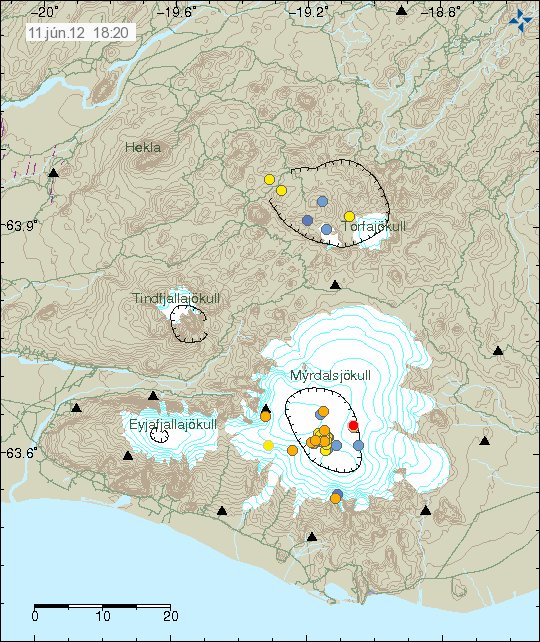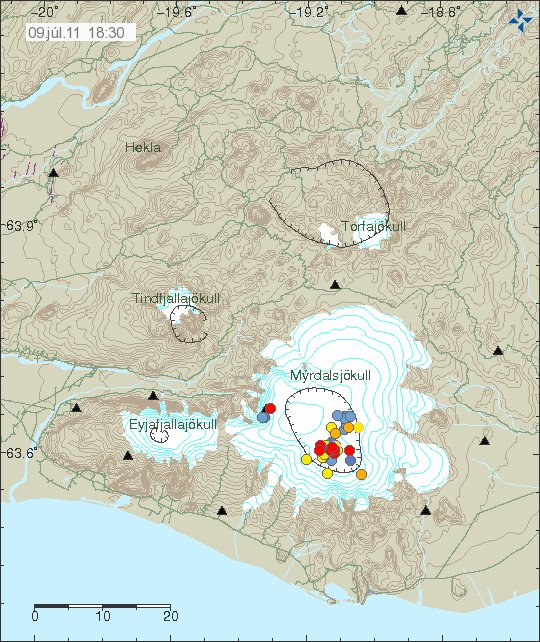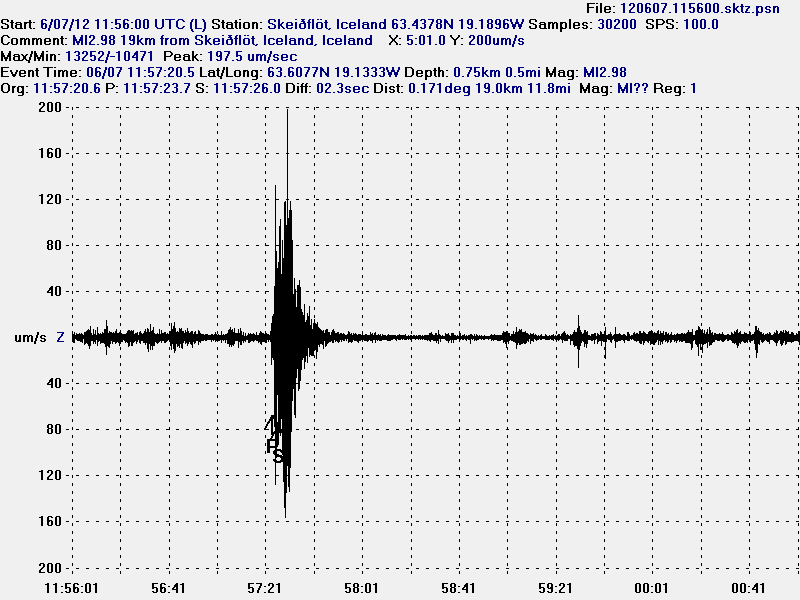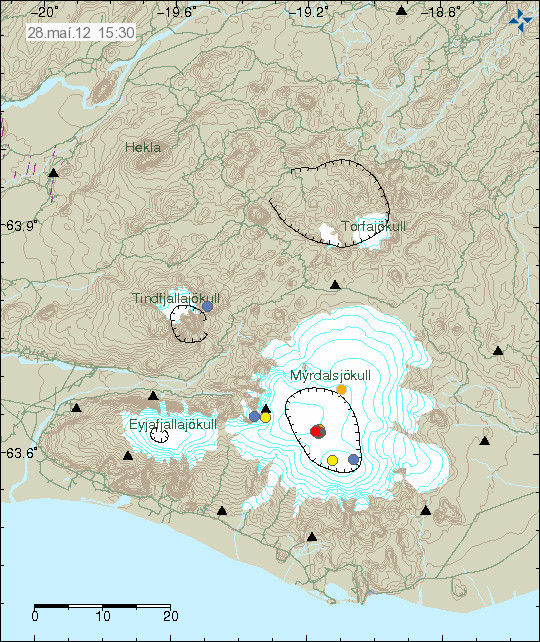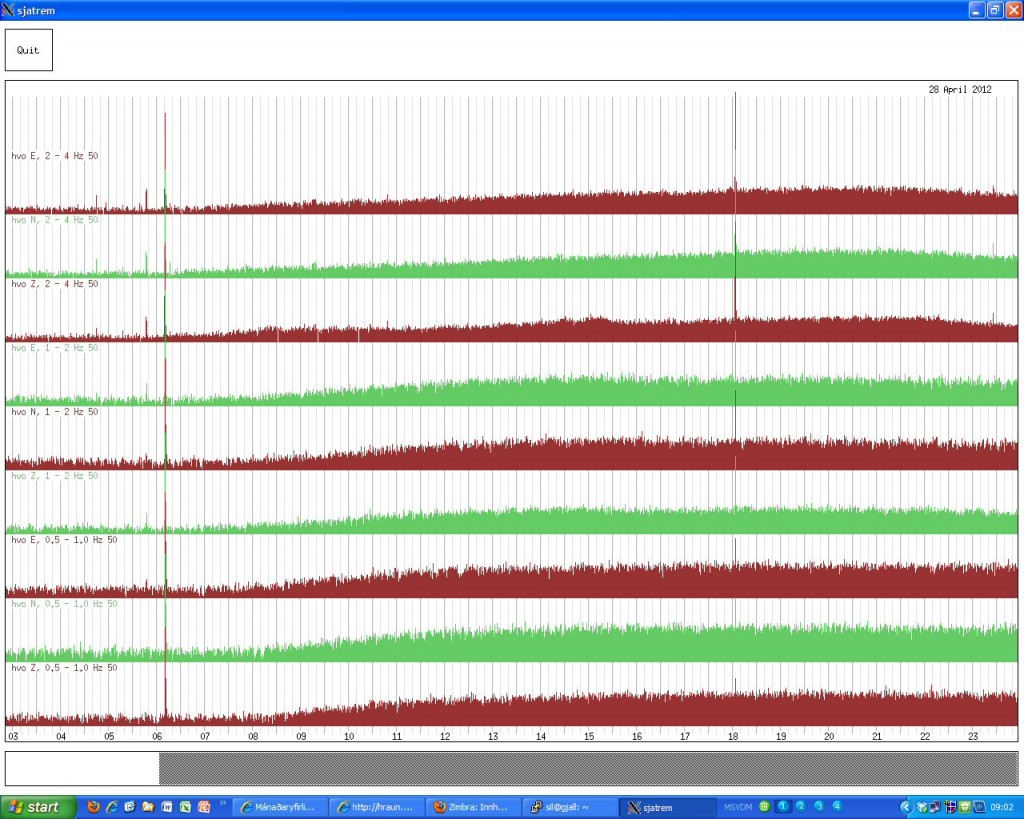It seems that Askja volcano is warming up. Literally. According to news on Morgunblaðið web site. The Askja volcano lake is now ice free. But that is highly unusual event. But normally during this time of year it is frozen over. In the news it is explained that this might be because the south wind in Iceland during the past few days, or the most likely second option. Askja volcano lake is now ice free because of more hydro-thermal activity in it. But that is seen as more likely option, as Mývatn lake, that is at considerable lower altitude is now frozen over. There was done a air survey with thermal cameras to see if there was any increased heat on the surface. So far that is not the case at the moment. But it might well be that the hydro-thermal areas under Askja lake are getting more active an warmer. At least that is the only explanation that makes logical sense to the scientists according to this news report. But while the surface activity is none. The chance is that at the bottom of the lake it is getting really hot, and that in turn warms up all the water mass in the Askja lake. But this means that the energy output from the hydro-thermal areas is already high. Even if it is not visible at the surface of the lake.
Askja lake is around 220 meters deep. It was formed in large eruption in the year 1875 (VEI=5). But that was an caldera formation event that took place. But where Askja lake is now, it used to have a mountain that was in decent high before it was blown up into the air. At current time there is no new hydro-thermal activity in Askja volcano (around the lake). Besides the one reported in Askja lake. But based on recorded history, that might change soon. But it seems that before an eruption in Askja volcano, hydro-thermal activity increases in Askja volcano. But that means new hot springs, geysers and such. With all associated dangers and smells from sulfur. At current time, there is no risk of imminent eruption. As the activity at this moment suggests this is just starting, a long more might need to happen before an eruption. But that might change without warning as always. Since all volcanoes are impossible to predict what happens in them. Askja volcano has been having slight increase in earthquake activity during past few months. That suggests new magma is flowing into Askja volcano. But that earthquake activity has somewhat stopped completely and activity has quieted down from what it was few months ago.
Update 1: Here is a new picture of Askja volcano. Taken by Ómar Ragnarsson retired news reporter from Iceland. He also has a new image from Kverkfjöll volcano here.
Update 2: Iceland Meteorological Office has issued a press release about Askja volcano. It says that Askja lake is now ice free (same as in other news). The coast guard did go to check Askja lake on 2nd April 2012 with thermal cameras. In that trip it was discovered that Askja lake is completely ice free with no floating ice in it. The known hydro-thermal areas that are known where well active according to IMO. But no new areas of hydro-thermal activity where spotted in this flight over Askja volcano. Iceland Meteorological Office is going to increase surveillance with Askja volcano and to watch for future progress on what might happen in Askja volcano in the future.
News about this in Icelandic. Use Google translate to scare the Easter Bunny.
Öskjuvatn íslaust með öllu (mbl.is)
Íslaust Öskjuvatn í mars (Vatnajökulsþjóðgarður)
Öskjuvatn íslaust (Iceland Meteorological Office)
New pictures of Askja lake are in both news. Showing it completely ice free during the winter. Pictures are taken on 18th and 27th of March. Iceland Meteorological Office has MODIS picture of Askja volcano that clearly shows how ice free Askja lake actually is.
Blog post updated at 01:32 UTC on 03.04.2012.
Blog post updated at 01:45 UTC on 03.04.2012.
Blog post updated at 16:32 UTC on 03.04.2012.
Blog post updated at 16:48 UTC on 03.04.2012.
